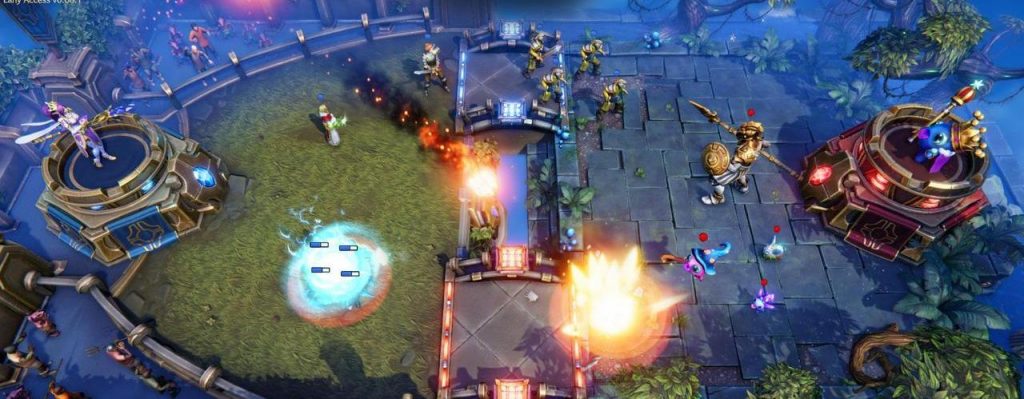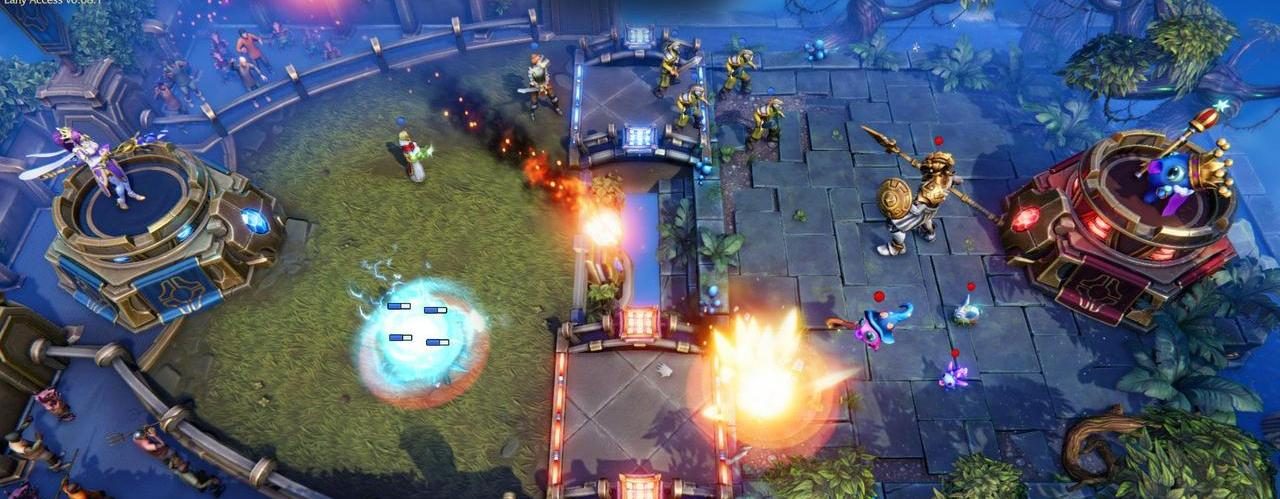Recently I was introduced to a free dueling video game called Minion Masters. With average matches lasting five minutes or so, the quick gameplay and cartoonish graphics caught my attention—I’ve been looking for a game I can pick up for a few minutes at a time without feeling like I’m missing out of the grander experience, and it looked fairly polished for a free game. A few clicks later and I was downloading.
Described as an “action card game,” I didn’t quite know what to expect. I’m familiar with turn-based card games like Magic: the Gathering and Hearthstone, but neither would I describe as action-related, or even action-adjacent. In Minion Masters, each player builds a limited deck of ten cards, each card representing a spell (such as Fireball), a building (such as a barracks), or a minion (such as a knight), and plays those cards in real-time, without alternating turns. Each side’s goal is to do damage to the other team’s keep, reducing it to zero life, while preventing their opponents from doing the same to them.
Minions are the mainstays of any army, and they plod along the battlefield unless an enemy gets within range, where they start attacking. There are terrestrial and flying minions, further specialized into those that can attack at range and those which are melee-only.
Spells have a one-time effect like destroying a single enemy minion or giving friendly minions unique effects like double speed or limited invulnerability.
Buildings do “other things.” Some are purely defensive, protecting your keep from damage or stopping a minion wave, while others are more offensive, spawning friendly units on a set schedule until destroyed.

Though at first the above image may look chaotic, there aren’t that many elements to explain. Typically minions can only be summoned on your side of the battlefield, and they will make their way across the nearest bridge (one top, one bottom) toward the enemy keep. In our example we see that Blue holds one bridge—meaning one of their minions stood on it last—while Red holds the other. Keeps and healthbars are similarly colored for easy identification.
As each team summons minions, builds buildings, and casts spells, their opponent attempts to counter their efforts. A slow but powerful minion may be brought down by a horde of weak ones, or a ranged sniper may shoot a melee attacker before it can close into range. Knowing how to and having the forethought to counter an enemy’s tactics are the keys to victory here.
Some games, be they castle defense, real-time strategy, or first-person shooter, come down to flashy dressings resting upon a match of Rock Paper Scissors—a creature or weapon of type A can easily defeat type B, which in turn can defeat type C, which in turn can defeat type A. While there is a fair amount of that in Minion Masters, there are many additional elements which complicate matters and make the game less formulaic.
By and large, players can summon minions anywhere on their side of the battlefield, as close to the keep or as close to a bridge as they may prefer. A minion summoned in the top half of the battlefield however isn’t guaranteed to go over the top bridge; if they detect an enemy within a limited range they will stop advancing and move to chase it, even if the other minion is on the bottom side. Sometimes victory comes not from overpowering your opponent but by distracting their powerful units with cheap, disposable ones, possibly rerouting them away from the path their summoner desired.
With many different types of in-game currency, all spent on different game aspects, there is a lot of promotion of their real-money purchases. Though it’s a very present part of the UI, Minion Masters does a far better job of letting players ignore it in order to get to the actual battle action than some other free to play games have.
I’m a big fan of the fact that Minion Masters doesn’t appear to be a “pay-to-win” game, in that spending real-world money on in-game items doesn’t provide a measurable in-battle effect. The game is all about mixing when and how to play cards of all rarities and point values, and winning isn’t solely decided by who has the biggest, baddest minion in their deck. Purchasing in-game currencies allows a player to more quickly spin the in-game roulette wheels for prizes, but players also earn a reasonable amount of tokens just for playing the game.
Minion Masters introduces—to me at least—a big shift in the gaming industry, in that the game is downright meant to be streamed to services like Twitch. Some games may have “built-in” (more like “bolt-on”) support for streaming services, but MM integrates the entire streaming ecosystem, community and all. Players who are watching live streams will actually show up as audience members/spectators in the matches they’re watching, and viewers can earn prizes if the player they are supporting wins matches. The depth of the integration really surprised me, and I fully see more games moving in that direction as game developers embrace the streaming community.
Though I have a referral code that gets me small in-game benefits for having people sign up through it—cosmetic items like profile avatars or unique creature skins—I would hope someone would play a game not solely because of who else plays it but because it looks interesting to them. You can find Minion Masters on Steam and presumably on other platforms as well, and I would encourage you to at least check it out; it’s a free game and the tutorial is very short, just enough to get you into the action.
Header image is taken from in-game footage.















